Pure Audio Project Trio10 MundorfAMT Loudspeakers
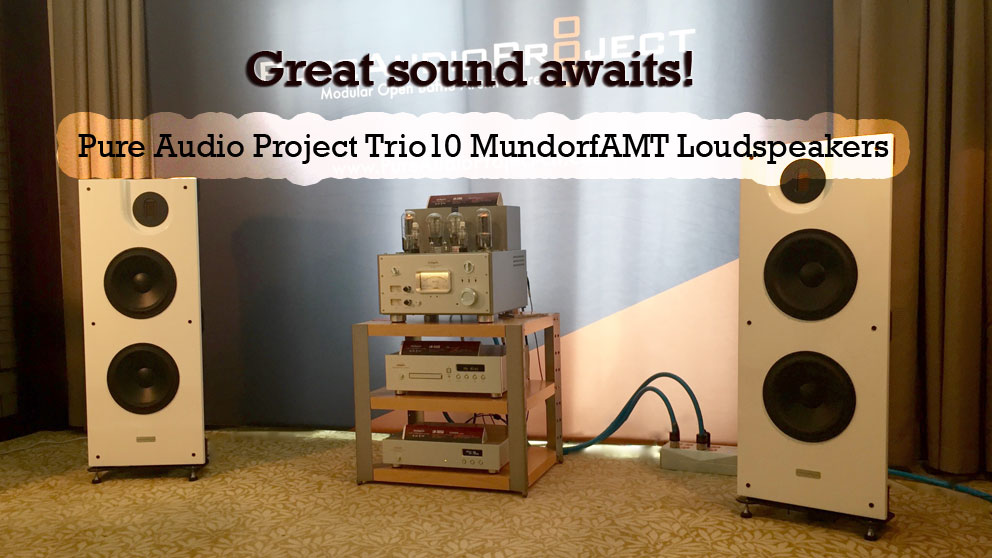
Some Assembly Required
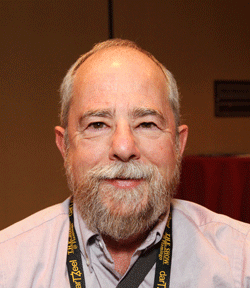 In the 1980’s I, like many others, fell in love with Dahlquist DQ-10 loudspeakers. Their unique, partial-open baffle design created a spacious, open soundstage that eventually earned them legendary status. DQ-10s weren’t perfect by any stretch and perhaps Cheryl Wheeler sings it correctly in the song “Arrow”—“Maybe time and wishful half-remembered fantasy are the greatest part”. But still, in a simpler time, DQ-10s left their mark and set a standard.
In the 1980’s I, like many others, fell in love with Dahlquist DQ-10 loudspeakers. Their unique, partial-open baffle design created a spacious, open soundstage that eventually earned them legendary status. DQ-10s weren’t perfect by any stretch and perhaps Cheryl Wheeler sings it correctly in the song “Arrow”—“Maybe time and wishful half-remembered fantasy are the greatest part”. But still, in a simpler time, DQ-10s left their mark and set a standard.
Alas, one cold winter’s night men with evil in their hearts and probably drugs in their veins stole most of my audio equipment. After a suitable mourning period and with an insurance check in one pocket and upgrade cash in the other, I visited all audio stores within reasonable driving distance. That was a time when brick and mortar stores were plentiful.
I was already ruined or maybe enlightened. The genie, or rather the music, had escaped the box. No box speaker could replace my beloved DQ-10s. Fortunately, Apogee Stage loudspeakers on factory stands outclassed every conventional speaker within twice my budget. The decision to purchase them was easy. Later the crossovers were replaced with custom external ones and the stands replaced with factory subwoofers to create Mini Grand loudspeakers.
I am faithful to a fault. Love the one you’re with-right? But sometimes the heart strays. While visiting rooms at CES I heard Quad ESL-2805s. And heard them and heard them and heard them. Meaning I returned to the room several times. I was fortunate to obtain a rare pair in the attractive, brown-tweed Classic finish to review (here) and eventually purchase.
I have heard hundreds of speaker at shows, in showrooms, and private homes. As hard as I tried to like them, box speakers never completely engaged me. A few were very good but there was always a little nagging something not quite right to my ears or needs. There was a magic in open baffle (OB) designs I did not hear in box speakers.
My system has evolved to the point where I can live quite happily with what I have. That does not mean I won’t continue to tweak or refine it even more. It does mean I can enjoy music without fretting over some minor issue. Still, I long for speakers more robust in design with fewer parts to fail and easier to fix if they do. That has led me to re-explore the world of OB loudspeakers to challenge the high bar set by Quads.
While technically electrostatic and planar-magnetic speakers are open baffle, for the purposes of this review when I write OB I am referring to dynamic driver designs unless I indicate otherwise. With the PureAudioProject Trio10 MundorfAMT loudspeakers I continue my journey down the road less traveled.
The Company
PureAudioProject has been in business for three years but only manufacturing and selling for two years. The company had their coming-out-party at the Munich High-End Show in 2013 where they were featured in the newcomer area and this magazine’s show report, an auspicious beginning indeed.
The company definitely has an international flavor with feet in several countries. Ze’ev Schlik, CEO, lives in Israel. Thomas Sulentic (PureAudioProject USA) lives in Iowa. Oak baffles, drivers, and crossovers are sourced from Germany. Lacquer baffles are currently sourced from China. Frames and bamboo baffles are manufactured by small shops in and near Cedar Rapids, Iowa. On various models they use Morel drivers manufactured in Israel and Eminence drivers manufactured in the United States.
The initial contact between Thomas and Ze’ev started with a Google search for OB speakers. Thomas found PureAudioProject an interesting possibility. One thing lead to another and a partnership was born. Ze’ev is a creative force with new ideas. Thomas helps refine those ideas and bring them to fruition such as establishing Iowa-based manufacturing for the redesigned frames and baffles and supplying customer support.
My first contact with PureAudiProject was at the California Audio Show 2015. I attended as a private citizen with no indication on my badge of my true “importance”. Ze’ev answered all of my questions with patience and courtesy and honored all of my requests from the limited selection on his music server. That spoke very well of the company and encouraged me to reveal a more sinister purpose. I was sufficiently impressed to request the opportunity to review whatever model he felt was appropriate for my listening room.
We quickly settled on a model only currently existing in pieces and parts and a gleam in his eyes. That model was the Trio10 MundorfAMT (Trio10) scheduled to debut at the Rocky Mountain Audio Fest 2015 (RMAF). The frames, baffles, and AMTs were shipped to me from RMAF immediately after the show. Later I received new mid/woofers to replace the broken-in ones borrowed for the show and new factory-built crossovers. And that is how this intrepid reporter scooped the competition.
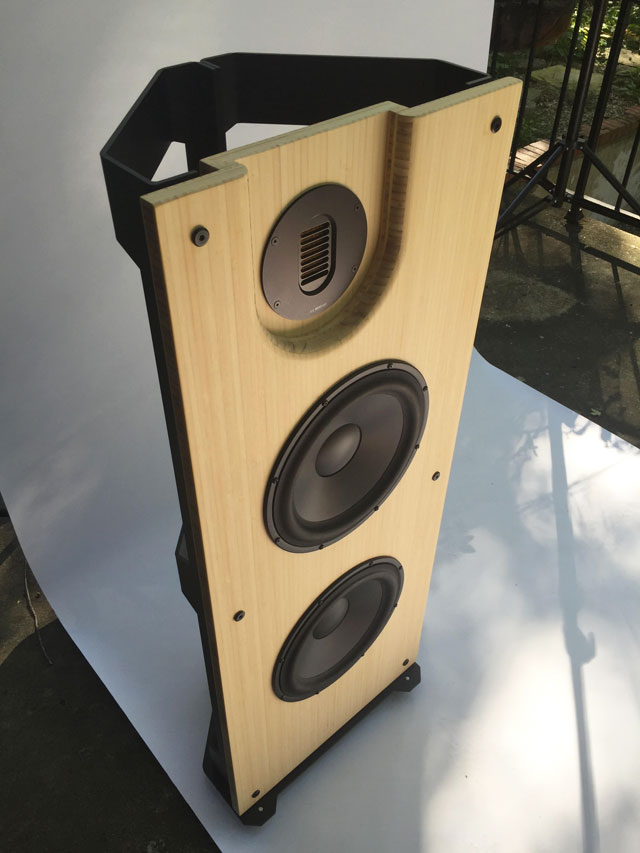
Sweat Equity
A natural audiophile instinct is to unpack new speakers as quickly as possible and set them down willy-nilly for a quick listen. This is not possible with the Trio10s. They are shipped flat-packed. Some work is required, sweat equity to be earned. Foreplay if you prefer.
Unpacking the speaker parts was a revelation. I immediately noticed the build and finish quality. Small-shop pride and attention to detail was obvious. The attractive natural-finish bamboo plywood baffles were beautifully machined and finished. The frames impressed me with their heavy gauge and fine finish. The two aluminum halves bolt together at the spine and then fasten to a heavy steel, slightly oversized baseplate to create a surprisingly stable platform. The frames are supplied with SuperSpike isolation feet from Soundcare in Norway. The feet adjust for height to allow backward tilt of the speakers. Spikes are available upon request. I found the spike threads too short to easily adjust for tilt so I promptly replaced them with 8m-thread spikes I had previously purchased for my Quads.
All screws are socket hex-head (Allen-type). Drivers and baffles are both mounted using through-and-through screws with knurled thumb nuts. Screws connecting the frame halves and base plate fasten to threaded reinforcement bosses. Reinforcement bosses are also provided for mounting the crossovers. I was very impressed at the extra measures taken to reinforce every point where a screw fastens directly to the frame.
Assembly was simple if the proper sequence was followed. The only part of the assembly that gave me pause was a pile of nuts and bolts about double the number that came with my childhood Erector Set. Patience would be needed to install that many fasteners. The only tools required are the two supplied hex wrenches, nimble fingers, and the aforementioned patience. I placed towels over drivers and exposed baffles to protect them from my clumsiness. I was able to accomplish assembly without assistance although I would have appreciated extra hands mounting the baffles on the frames.
Eventually patience is rewarded and replaced by pride. By the time the speakers were assembled I had a deeper attachment and sense of accomplishment. Look what I just made! Although I take more credit in their creation than is due me, I had not gotten to experience that warm fuzzy feeling with fully-assembled purchases. I was part of the process and my fingerprints were literally all over the speakers. But the assembly process was not entirely painless. One speaker counted coup by reaching out and cutting my leg with a spike. Too bad I did not protect myself from my clumsiness. When a project leaves you bloodied you know you’ve engaged in manly sport and bragging rights are multiplied. Beware the insidious spikes.
Components
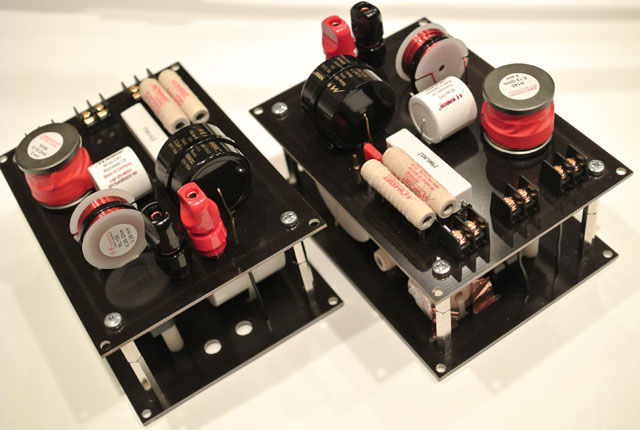 OB speakers remind me of hospital gowns. They reveal parts most would prefer kept hidden. Maybe this forces a manufacturer to use higher quality parts. That is not the situation here. I know the final design specifications for the Mundorf-built crossovers were determined after initial tests proved the drivers and design worthy. The quality of the parts in the Trio10 crossovers is typically only found on flagship designs.
OB speakers remind me of hospital gowns. They reveal parts most would prefer kept hidden. Maybe this forces a manufacturer to use higher quality parts. That is not the situation here. I know the final design specifications for the Mundorf-built crossovers were determined after initial tests proved the drivers and design worthy. The quality of the parts in the Trio10 crossovers is typically only found on flagship designs.
Mundorf parts used include their Supreme EVO Silver/Gold Oil Capacitors, foil inductors, and Supreme-Resist Resistors. Mundorf also supplies their neodymium-magnet AMT tweeters. The tweeters are recessed in the baffle to use physical placement for time and phase alignment much like the design of my old DQ-10s.
Drivers include two PAP1075 double magnet 10″ bass/mid woofers designed by Morel specifically for OB speakers and PureAudioProject. The bottom driver is cut off at 250Hz while the middle driver plays up to 6.5kHz. The Mundorf-built AMT plays from 6.5kHz to the top of its frequency range.
Performance
Now I feel compelled to write the part of reviews I hate- describing the last nuance of performance on a particular piece of music. That is a fool’s errand at best. I know from experience that a change of footers or a single piece of wire can change what I hear in subtle, and sometimes not so subtle, ways. Tube rolling opens up another universe of possibilities. Loudspeakers at the end of a long chain of electronics and connecting wires are the most vulnerable especially when placement and room factors are considered. Please take my comments on performance with a suitable degree of caution. Even with the task made easier by acknowledgement, I know I have still not risen to it by failing to extract the last measure of performance from the Trio10s. I can only hope to honestly portray their general character.
For me listening to OB speakers (here I include all designs, i.e. electrostatic and planar magnetic) is the difference between comparing a bird in a cage with the beauty of a bird on the wing. Boxes are cages. OBs let the music soar freely. The Trio10s surprised me from the first listen despite not having any hours on them and placement being a guess. They immediately did what many box speakers fail to do or only do if perfectly placed—that is they disappeared. They were open and spacious but a little sluggish. New 10” drivers need some exercising before they limber up. In the case of the Trio10s, at about 150 hours they started sounding good but they were not finished yet. After that changes came more slowly.
Most speaker manufacturers build complex boxes trying to fully negate their affect. OB designs avoid that “weighty” problem. And I do mean weighty in two senses. The problem is both significant and heavy with the solution frequently exceeding 100 pounds per speaker for modest-sized floor-standing speakers. I have always thought it was better to avoid problems rather than solve them later.
Trio10s avoid common speaker problems by eliminating box resonances and some of the driver matching. By using one driver for both the midrange and bass while reinforcing the bass with an identical driver they guarantee speed-matching, coherence, and dispersion patterns in those critical frequency ranges. This avoids the problem faced by many box speakers trying to mate 8-12” woofers with much smaller midrange drivers or trying to get low bass out of multiple small drivers. That still leaves the task of matching the tweeter; making careful crossover design and component selection critical. No plan is perfect and frequently creates a new set of challenges. In the case of OBs, those would be baffle design including sizing and bracing. Despite the heavy bracing on the Trio10s I noticed a lot of vibration on the baffles and frame.
One shortcoming of OB designs is poor low frequency response. In fairness, many box speakers also fail to deliver low bass response or do it so poorly it would be better left absent. This is especially true in the price range of (and considerably above) the Trio10s. I believe a well-executed OB can have superior definition in low bass for instruments like an upright bass, guitars, and piano. I found this to be true with the Trio10s. I frequently wished for more bass from the Trio10s at the same time I admired the detail. This was a situation of quality over quantity.
Another perceived shortcoming of OBs is the need to give them breathing space. It is true that they need to have minimum clearances but many box speakers also need that much room or more to optimize performance. Moving the Trio10s to test positions was a breeze because of their light weight and built in handles. Final placement in my room was 22” from the side walls and 43.5” from the front wall to the front of the baffles with the inside edge toed back 1” and just the slightest tilt backward. There was 69.5” between the speakers. If I had box speakers in my room I would not be surprised to find them located in the same area.
The minimal toe-in helped to tame the AMT and provided an additional benefit. I did not find a “sweet spot” with the Trio10s. It was more like a sweet area. With these speakers it is easy to share the music. Listening off-axis or moving closer or farther away from the speakers was still excellent. My reading couch and lamp are in a corner directly in line with one speaker. It that position I did not hear any significant tonal shift other than additional bass and the image stayed solidly in the center. I spent many hours reading and listening in that location and did not feel my enjoyment diminished in any way.
I found the Trio10s excellent at low volume. There was no need to push music out of a box. I also found them entirely capable of filling a large area. My listening room has a large opening behind the sweet-spot chair. That, in addition to a cathedral ceiling, is one of the saving graces of my small room. Music spilled out that opening and filled the adjacent room. On some recordings the Trio10s could reach levels much too loud even in the adjacent room. The only limit seemed to be the AMTs which can get hard when pushed. But that harshness only appeared on music that I had noticed to be harsh already. For example, well-recorded brass stayed smooth while poor recordings got worse when the volume was increased. On some vocals I noted a slight sibilance. I have heard various models of AMTs on different speakers and I have found them unforgiving. Here is an instance where the recording and upstream equipment is more critical.
I used two different amplifier designs on the Trio10s, and found them well paired with both. The solid-state amplifier used was a Sanders Sound Systems Magtech. Tube amplification was provided by an Audio Research Corporation Reference 75 with KT-150 tubes. The Reference 75, while much less powerful than the Magtech, coasted at 0.5-3 watts at normal listening levels. Overall the Reference 75 was warmer in the midrange and the AMT sounded smoother. The Magtech provided more solid low frequency response. The differences between the two amplifiers were small enough to become a matter of preference over absolute superiority and subject to tweaking upstream. Despite the low meter readings on the Reference 75, I would advise against pairing the speakers with an underpowered amplifier.
I am just short of fanatical when it comes to demanding seamlessness and was delighted with the Trio10s. I almost forgot to include comments in my review because the issue did not exist. It was a case of out of hearing, out of mind. There was never any hint of discord. Obviously using a wide-range driver for midrange and bass and reinforcing the bass with an identical driver was a sage decision. Then the Mundorf crossover did its job discretely by balancing the two and merging the AMT.
OBs of different design technologies have inherently different overall characteristics in how they present music. To me the Trio10s sounded more like good planar-magnetic speakers than the dynamic drivers they are. I was never able to pinpoint one speaker or driver. Music appeared with the ease characteristic of panel designs. While unabashedly admitting fondness for various OB-designs, I simultaneously acknowledge that there can be problems. I find that large panels can exaggerate the size of performers and instruments and large electrostatic speakers can sound unnaturally thin. The Trio10s captured the benefits of OB-design and avoided the potential problems. The soundstage was spacious and holographic. Imaging was good and the center was solid. I did not feel instruments and performers were blown out of proportion.
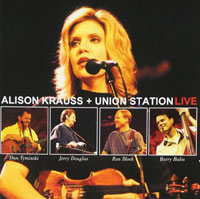
The track “The Boy Who Wouldn’t Hoe Corn” from the CD-layer on Alison Krauss + Union Station Live [Rounder Hybrid SACD 11661-0515-6] is high-energy with five different string instruments and soaring vocals. The Trio10s presented a spacious soundstage with dynamics faithfully capturing a live performance with the musicians kicking out all the stops and knocking down all the walls. This is a real foot-stomper on the Trio10s.
“Joan of Arc” from Jennifer Warnes’ CD, Famous Blue Raincoat 20th Anniversary Edition [Shout Factory LLC, 826663-10490] is an artistic masterpiece. The care that went into the performance, recording, and mastering is a rare occurrence. The Trio10s capture the delicacy and nuance of Jennifer’s voice and the smoky, hint-of- huskiness from Leonard Cohen’s, accompaniment. Jennifer’s dubbed backup enhances the wistful mood. The midrange on the Trio10s is quite seductive. This track was especially appealing using the ARC amplifier. I did wish for more bottom end support on instruments.
The track “If it be Your Will” from the same CD is study in grace and surrender and that is exactly how it appeared in my listening room. Speakers and walls did not exist. The song floated in the air like an angel’s voice. The accompanying guitar and keyboard were equally delicate and moving.
I was in for a huge shock when I played the CD Mussorgsky: Night on Bald Mountain/Pictures at an Exhibition [Telarc B000003CSH]. I had played the CD early in the break-in period. Then the Tri10s handled complex passages easily and could play louder than I cared to listen but I was not particularly impressed. That left me totally unprepared for what I heard playing the same CD after 175 hours of break-in. I was floored at how big (and loud) these small speakers could play. They portrayed the music in a scale befitting full-orchestration. The ARC amplifier meters were showing 30W at peaks but that was louder than I cared to listen long-term.
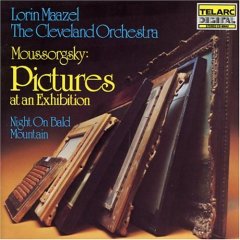 On classical music I wished for more bass underpinning to provide a more visceral feel. Dynamics were excellent but the weight was a little lighter than I would have liked. I have heard that level of performance from box speakers but they tended to be large and placed in large rooms that provided a lot of space to develop the soundstage. Some smaller box speakers could give more body but tended to be muddy. Massed strings became “messed” strings. The Trio10s were able to avoid that and create a large soundstage in a small room while maintaining the integrity of the music.
On classical music I wished for more bass underpinning to provide a more visceral feel. Dynamics were excellent but the weight was a little lighter than I would have liked. I have heard that level of performance from box speakers but they tended to be large and placed in large rooms that provided a lot of space to develop the soundstage. Some smaller box speakers could give more body but tended to be muddy. Massed strings became “messed” strings. The Trio10s were able to avoid that and create a large soundstage in a small room while maintaining the integrity of the music.
In equipment selection it all too often it comes down to a choice of definition over body. I choose definition. That is one of the reasons I chose Quad speakers. I understand that others would prefer more body and bloom. It is a matter of personal taste. None of my equipment would be considered particularly lush. The old question of heredity versus environment must be considered here. What is intrinsic to the speakers (heredity) and how is that influenced by environment (ancillary equipment and room)?
Conclusion
The Trio10 MundorfAMTs do with ease what many higher priced speakers struggle with, they disappear. Perhaps that is why I am seeing an increase in dynamic-driver OB designs at audio shows. Most are well received because the listener immediately gets it. Quads are the standard I judge midrange performance against. The Trio10 MundorfAMTs come remarkably close to the Quads and outperform hundreds of other speakers I have heard.
The Trio10 MundorfAMT loudspeakers present a large but solid soundstage and remind me a lot of planar-magnetic speakers. At the same time they have a much smaller footprint and require less free space around them. I was impressed both by their delicacy and nuance on soft acoustic material and their dynamics on rock and classical music.
Bass response is adequate for many recordings. Bass performance surpasses many box speakers in quality and definition. There is no muddy bass replacing quality with quantity. Upright bass, cello, and acoustic instrument fans will appreciate the definition from the Trio10s but might wish for more body. The same could be said for music with drums and certain types of classical music.
When talking to Ze’ev it becomes obvious he is passionate about music and his goal of bringing the best performance to as many listeners as possible. This results in providing drivers and crossover components at a level of quality unprecedented even at several multiples of the Trio10 MundorfAMT’s price. Costs are contained by selling direct and allowing owners to participate in the creative process.
PureAudioProject bridges the gap between pure DIY, where every project is an experiment, and completely hands-off pre-built. They have removed the guesswork and provided the opportunity for audiophiles to be involved in creating speakers that out-perform speakers costing multiples. This young company is one to watch. Like their name suggests, they have some interesting “projects” in development. Great sound awaits those who don’t mind that there is some assembly required.

![]()
don shaulis
Specifications
Sensitivity: 89dB
Impedance: 8 ohms
Frequency Response: 40Hz-23kHz
Dimensions: 16.5”W x 45.3”H x 10.6”D
Weight: 37 pounds
Website: http://www.pureaudioproject.com/
Email: info@pureaudioproject.com
Price: $4,799
includes shipping in the U.S. and Europe (EU). Shipping is from Iowa in the U.S. and Frankfurt in Germany.
One thought on "Pure Audio Project Trio10 MundorfAMT Loudspeakers"
Leave a Reply
Stereo Times Masthead
Publisher/Founder
Clement Perry
Editor
Dave Thomas
Senior Editors
Frank Alles, Mike Girardi, Russell Lichter, Terry London, Moreno Mitchell, Paul Szabady, Bill Wells, Mike Wright, and Stephen Yan,
Current Contributors
David Abramson, Tim Barrall, Dave Allison, Ron Cook, Lewis Dardick, John Hoffman, Dan Secula, Don Shaulis, Greg Simmons, Eric Teh, Greg Voth, Richard Willie, Ed Van Winkle, Rob Dockery, Richard Doran, and Daveed Turek
Site Management Clement Perry
Ad Designer: Martin Perry





After reading your article and summary of the Project Trio 10 Speakers. I would think that it must have a good subwoofer to achieve the lower octaves 30 hz to 20 hz. Your Article was Very Informative and Presented An Accurate Picture of Project Trio 10 Speakers.